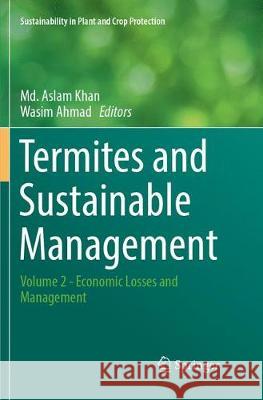Termites and Sustainable Management: Volume 2 - Economic Losses and Management » książka
topmenu
Termites and Sustainable Management: Volume 2 - Economic Losses and Management
ISBN-13: 9783319886466 / Angielski / Miękka / 2018 / 324 str.
Kategorie:
Kategorie BISAC:
Wydawca:
Springer
Seria wydawnicza:
Język:
Angielski
ISBN-13:
9783319886466
Rok wydania:
2018
Wydanie:
Softcover Repri
Ilość stron:
324
Oprawa:
Miękka
Wolumenów:
01











